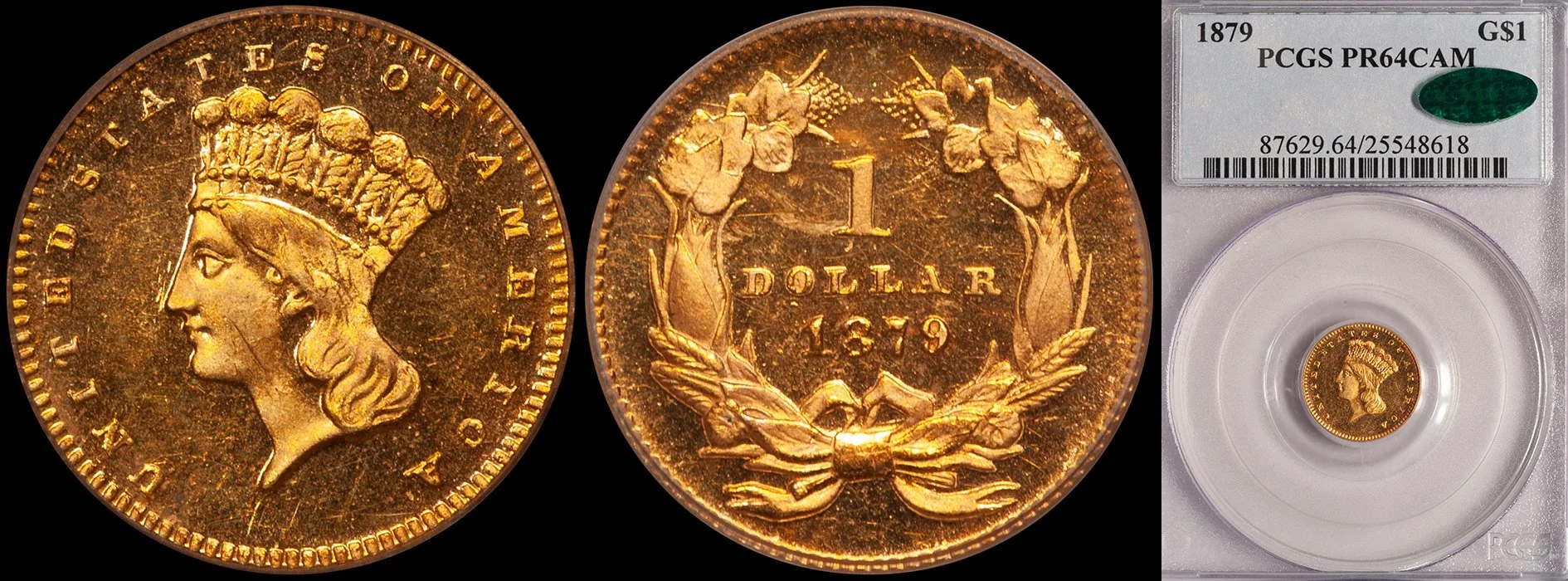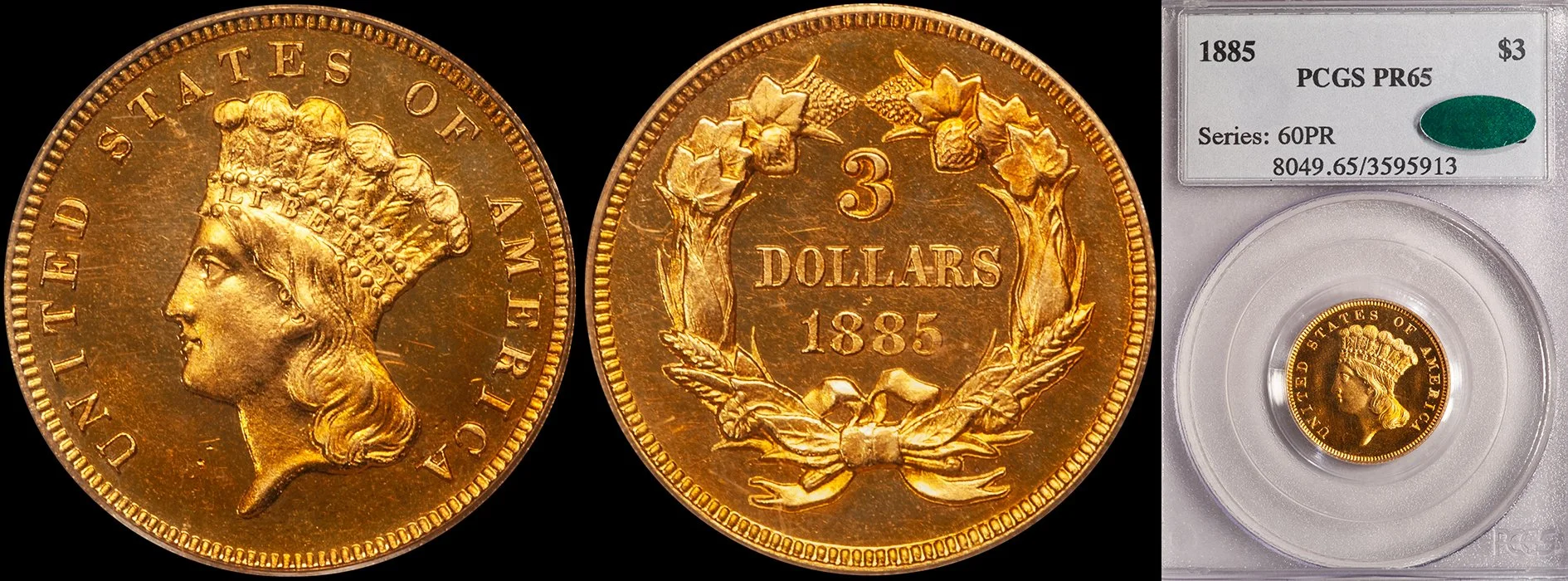How to Price AU58 Gold Coins
/As a buyer of rare gold coins, nothing makes me happier than seeing choice AU58 pieces with original color and surfaces. I love "Gem Sliders" as these coins tend to have better eye appeal than most MS60 to MS63's and are typically priced at a much lower level. They can be among the best values for savvy collectors but the question that often comes up with these coins is "how much of a premium do they command?" Not all AU58's are similar in quality. In fact, I think there is a huge range of quality and appearance within this grade. There are AU58's that are bright and have clearly been scrubbed. Other AU58's are more original but they are excessively abraded or a bit lackluster. The coins that I call Gem Sliders are ones that probably saw little--if any--circulation and acquired what little wear (or friction) they possess either from collector handling over the years or being transported from location to location. Out of all coins that are graded AU58, I'd say that fewer than 10% are true "sliders" and even fewer of these are what I'd regard as "Gems" for the grade.
The focus of this article is on how to price these Gem Sliders. In some series, such coins are seen from time to time but in most, especially those struck prior to 1880, they are rare enough that pricing can prove to be a challenge.
As I see it, pricing these coins falls into three categories: coins that merit a small premium, coins that merit a moderate premium, and coins that merit a substantial (or even a very substantial) premium.
A Gem Slider 1897-O eagle is a coin that merits a small premium over a less appealing AU58 example. This is so for a variety of reasons. First of all, the 1897-O is not a scarce coin in AU58 nor is it rare in the lower Uncirculated grades. Secondly, of the numerous examples graded AU58, a decent number are original and attractive. Thirdly, there is not a big price jump between AU58's, MS60's, and MS61's for this date. This means that an average quality AU58 might be worth around $800-900 while a truly superb AU58 might only be worth an extra $50 or so.
Gem Sliders that can be acquired for a moderate premium are generally priced at 15-30% over a less choice piece. An example of a coin that might sell for a premium in this range would be an 1851-C gold dollar. The 1851-C is not a rare coin by the standards of Charlotte gold dollars but it is certainly many times more scarce than the 1897-O eagle mentioned above. It is also an issue with a higher overall level demand since it is popular both with date collectors and with type collectors. The premium accorded a Gem Slider is not as great as one might expect for a number of reasons.
The 1851-C is relatively available in the lower Uncirculated grades and MS61 to MS62's sell for a reasonably moderate level in comparison to AU58's. This means that a collector on a limited budget has some options, unlike on an issue where the premium between an AU58 and an MS62 might be too great for him to consider the latter grade. Another thing to consider is the size of the 1851-C gold dollar. On small coins, the "gemminess" of Gem Sliders are not as apparent as on larger coins. This means that the premium tends to be lower.
It should be noted that not all small coins have their premiums held in check by size. An issue like an 1855-D dollar or an 1861-D could command a very strong premium in AU58 because of its rarity, its popularity and its prohibitively high value in Uncirculated grades.
The AU58 Gem Sliders that deserve to sell for a very significant premium are coins that have a number of factors working in their favor. They are typically large-sized coins (although not always; see below), coins that are extremely rare or expensive in Uncirculated and/or coins that are very popular.
To pick a fairly random example of a coin that would sell for a big premium in Gem Slider, let's look at an 1853-O eagle. This is a coin that has a fairly high population in AU58 (especially at NGC) and a scrubby, commercial-quality AU58 might be available for under $4,000. But a very high end, looks-like-an-MS62 Gem Slider is quite rare and could command a price in the $6,000-8,000 range. This sounds like an excessive premium but its not when you consider that there are only two or three properly graded pieces known in Uncirculated and if one were available it might sell for $15,000 or more.
A series that I think deserves high premiums for premium sliders is the Type One double eagle. With very few exceptions, this is a series which becomes exponentially rarer in grades above AU58 and one in which eye appeal is both critical and often lacking.
Again, let's take a random example; this time an 1855 double eagle in AU58. This is an undervalued, under-appreciated date in higher grades but one that is finally becoming recognized for its scarcity. A low-end AU58 example is worth around $4,000. In MS61, this date is worth in the $12,000-15,000 range. So what does that make a gorgeous, mark-free, frosty Gem Slider worth? $6,000? $7,000? Maybe even $8,000?
I can think of many coins where a Gem Slider (or possibly an especially nice AU55) might sell for more than a low end MS61 or even an MS62. An example that comes to mind is a 1796 No Stars quarter eagle. I haven't seen many Gem Sliders of this issue in the last few years but I have seen a number of really unappealing MS61 to MS62's. As a collector, I'd rather spend $200,000+ on a superb AU58 than I would an over-graded, processed MS62. The same scenario holds true on a number of other early gold issues, like 1795 half eagles and eagles, 1808 quarter eagles, etc.
Since the entire concept of Gem Sliders is so rooted in eye appeal which is, in and of itself, a hard concept to get universal agreement on, it would be impossible to publish a Gem Slider Price Guide. One man's $6,000 AU58 Type One double eagle might be another man's $4,000 coin. The addition of the "+" and "*" grades at PCGS and NGC to reward good eye appeal is a beginning of quantification but it is still up to the market to determine what premiums are applied to Gem Sliders.










